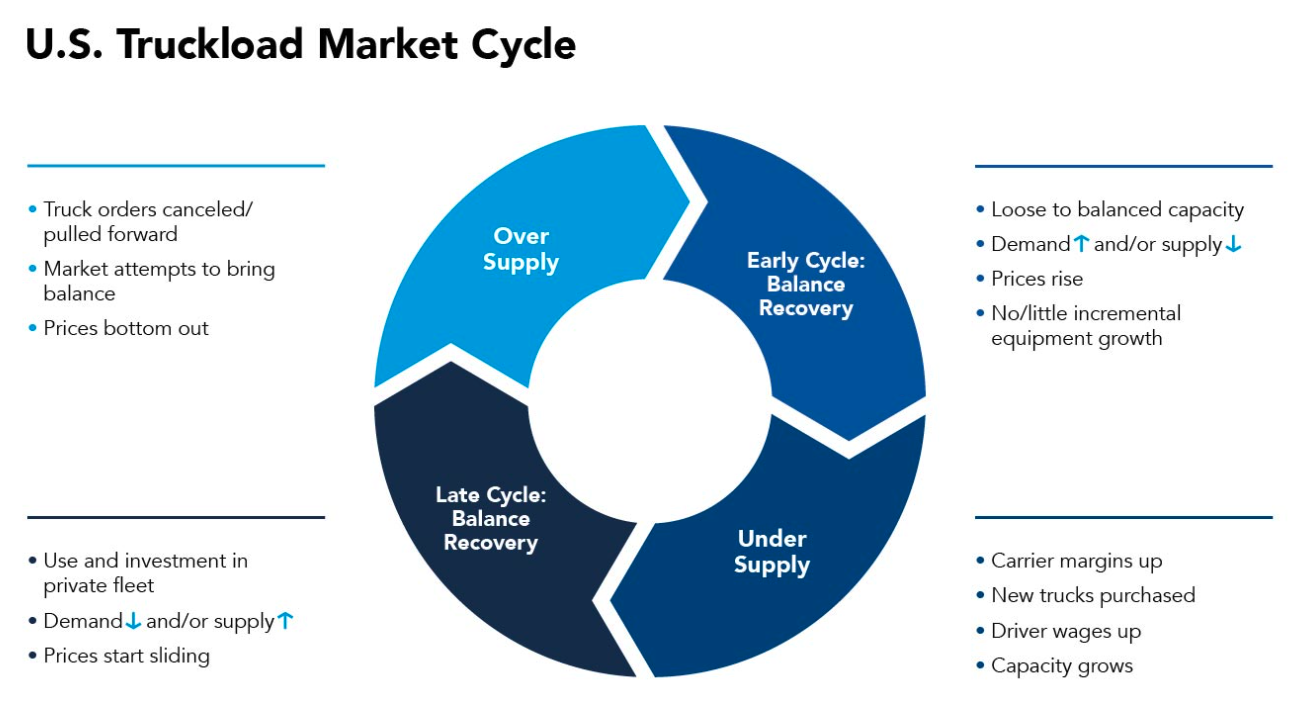The historical truckload cycle offers valuable insights into today's freight market conditions and helps us anticipate future trends as we analyze the balance between demand and supply.
Understanding the U.S. truckload sector’s recurring patterns can help stakeholders make smarter decisions. C.H. Robinson has even created a helpful visual that breaks down this cycle, making it easier to grasp how the industry evolves over time.

Knowing where we are in the cycle is essential for planning ahead. By combining this knowledge with ACT’s Class 8 tractor data, you can better predict what comes next and adjust your strategies accordingly.
**Early Cycle: Demand Recovery**
The cycle often begins in a balanced or slightly loose market. As freight demand starts to grow, capacity becomes tighter, leading to driver shortages. This shift gives carriers more power, pushing rates up first in the spot market and then in contracts about six months later. During this phase, tractor production tends to be low, while load-to-truck ratios and pricing rise, along with increasing orders for new equipment.
**Mid-Cycle: Capacity Expansion**
As rates climb, fleet operators see improved margins, which allows them to attract more drivers with better pay. With stronger profits, many fleets decide to expand by purchasing new trucks and trailers. Due to the industry’s fragmented nature, thousands of companies often make similar decisions at the same time, leading to an oversupply of capacity. This period is marked by high tractor production and long order backlogs.
**Mid-Late Cycle: Shippers Take Action**
At this stage, shippers look for ways to cut costs by increasing efficiency and shifting more freight to their private fleets. Meanwhile, the cycle has been running for a while, and growth in for-hire freight begins to slow. As supply outpaces demand, truckload rates start to fall, hurting carrier profitability. This leads to fewer orders and more cancellations as carriers struggle to maintain margins.
**Late Cycle: Adjusting to Lower Profitability**
Driver shortages may still exist, but they become less of a concern as carriers scale back on new equipment purchases and cancel orders. This reduction in supply helps bring the market back into balance. Eventually, as freight demand picks up again, the cycle starts over, and the process repeats itself.
Sports Equipment Accessories,Stainless Steel Bicycle Stop Parts,316L Stainless Steel Bicycle Stop Parts,304 Stainless Steel Bicycle Stop Parts
Dongguan New Decoration Material Technology Co., Ltd. , https://www.xsjmim.com